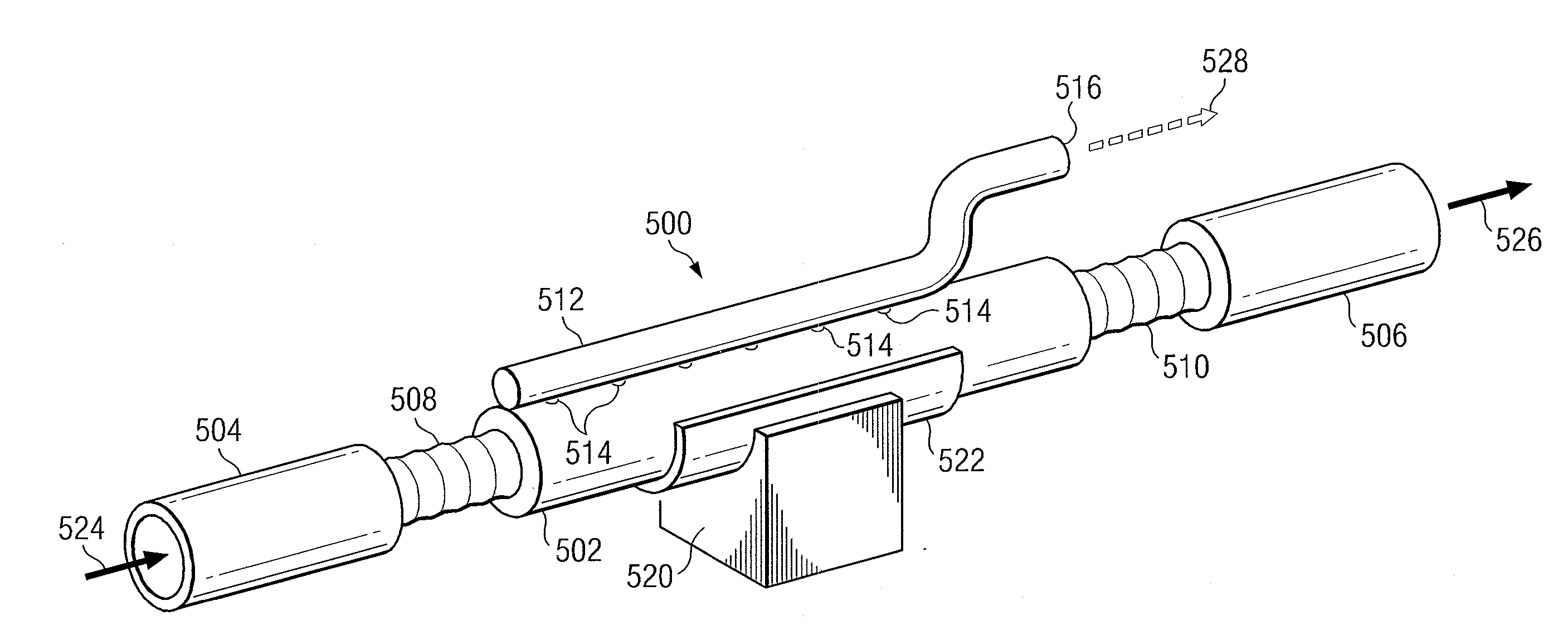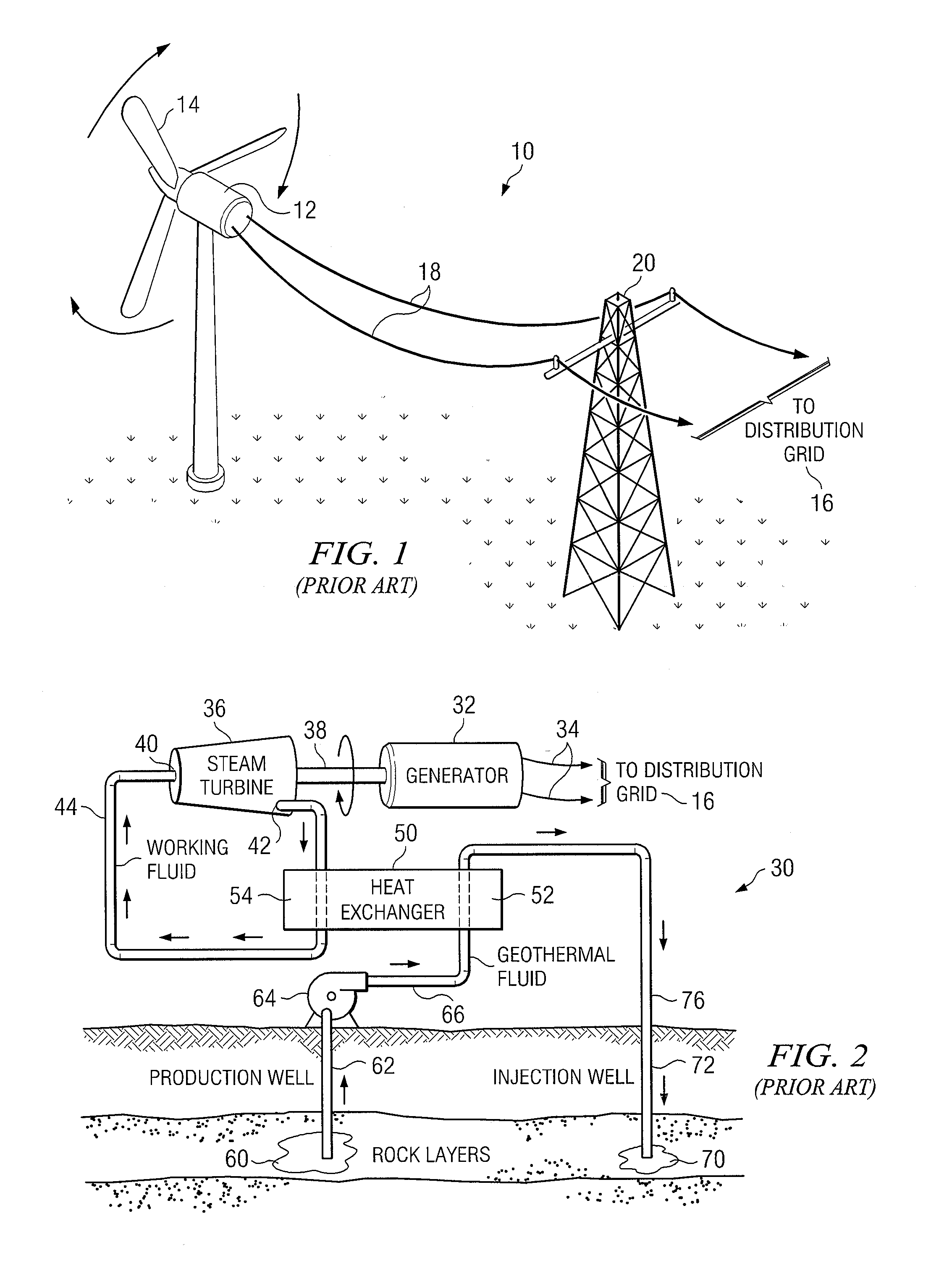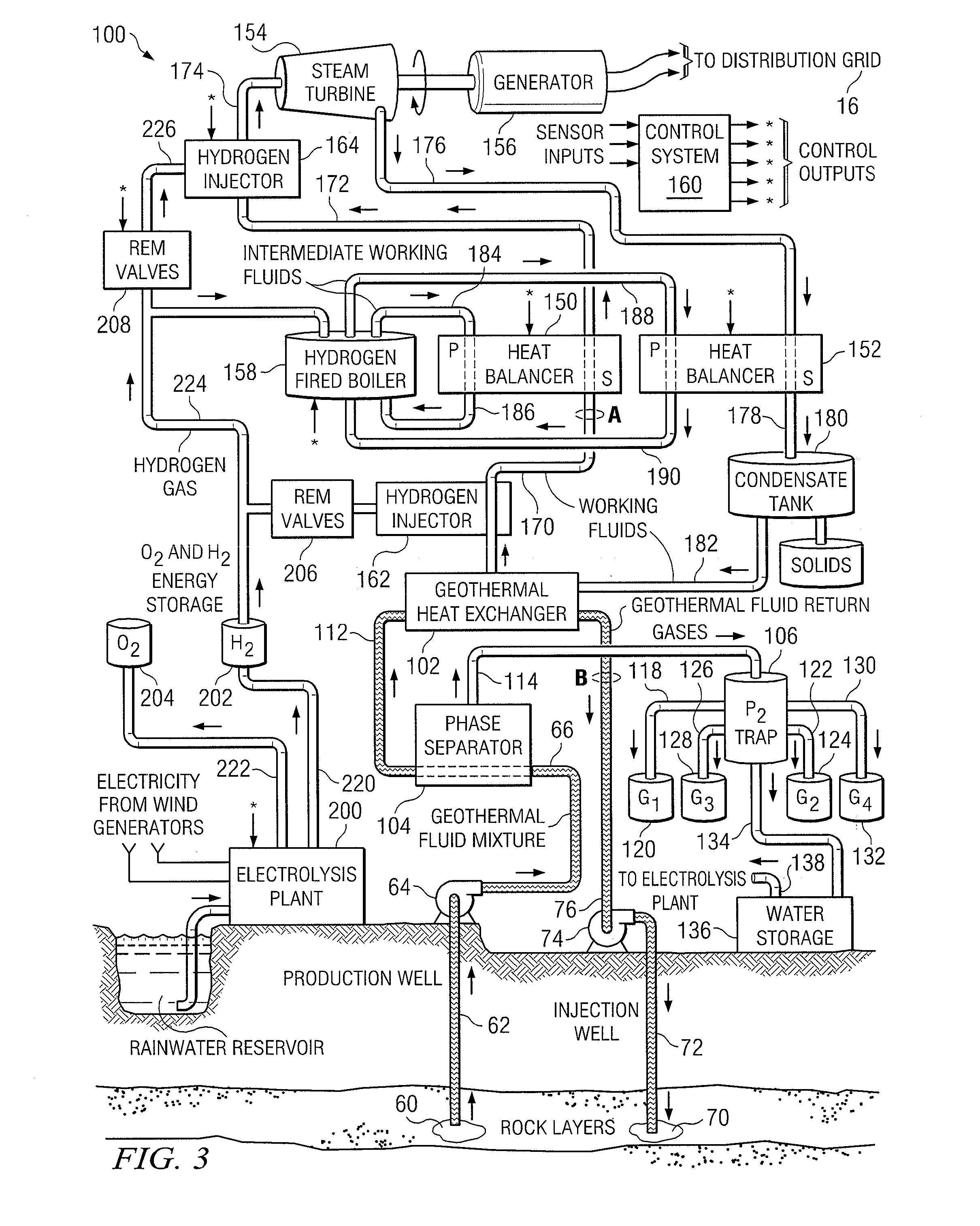Cavitation Phase Separators for Steam-Based Generating Systems
a technology of cavitation phase and generating system, which is applied in the direction of liquid degasification, separation process, auxillary pretreatment, etc., can solve the problem of low power recovery of geothermal fluid constituents for reuse, and achieve the effect of optimizing efficiency
- Summary
- Abstract
- Description
- Claims
- Application Information
AI Technical Summary
Benefits of technology
Problems solved by technology
Method used
Image
Examples
first embodiment
[0122]In the following descriptions of FIGS. 10, 11, 12, and 13, the piezoelectric cavitation phase separator will also be referred to as a “phase separator” or “PCPS,” associated with a reference number in the figure being described. Referring to FIG. 10, there is illustrated a simplified perspective view of a portion of a piezoelectric cavitation phase separator or PCPS 540 according to the present invention. The phase separator 540 in FIG. 10 is called a double-shell resonator and employs a linear piezoelectric stack 570 that may operate in either a 3-3 mode or a 3-1 resonant mode. The cylindrical cavity 544 for this configuration, formed by first 542 and second 546 double-walled “C” sections, includes a slot 572 through the wall of the cavity (from outside to inside diameter), and along each of two opposite sides of the cylinder 544, from end to end, forming two semicircular shells 542, 544 whose concave sides face each other. The two concave, semicircular shells 542, 544 are di...
second embodiment
[0125]Referring to FIG. 12, there is illustrated a simplified perspective view of a portion of a piezoelectric cavitation phase separator according to the present invention. This embodiment 600 of the PCPS may be called in this context a single shell or tuning fork resonator in which a transducer cylinder or body 602 includes a thin piezoelectric layer 606. The transducer cylinder or body 602 is a laminated structure having nested layers including an outer shell 604, the piezoelectric layer 606, and an inner insulating layer 608. The transducer 602, which forms a cylindrical cavity within it, further includes a single slot 640 disposed through the wall of the transducer cylinder or body 602 and the piezoelectric lining from end-to-end, parallel to its longitudinal axis. The single slot 640 in effect defines first 642 and second 644 sides or halves of the cylindrical body 602.
[0126]The piezoelectric layer 606 is driven by an electrical signal applied across the piezoelectric layer th...
PUM
| Property | Measurement | Unit |
|---|---|---|
| Temperature | aaaaa | aaaaa |
| Diameter | aaaaa | aaaaa |
| Efficiency | aaaaa | aaaaa |
Abstract
Description
Claims
Application Information
 Login to View More
Login to View More - R&D
- Intellectual Property
- Life Sciences
- Materials
- Tech Scout
- Unparalleled Data Quality
- Higher Quality Content
- 60% Fewer Hallucinations
Browse by: Latest US Patents, China's latest patents, Technical Efficacy Thesaurus, Application Domain, Technology Topic, Popular Technical Reports.
© 2025 PatSnap. All rights reserved.Legal|Privacy policy|Modern Slavery Act Transparency Statement|Sitemap|About US| Contact US: help@patsnap.com



